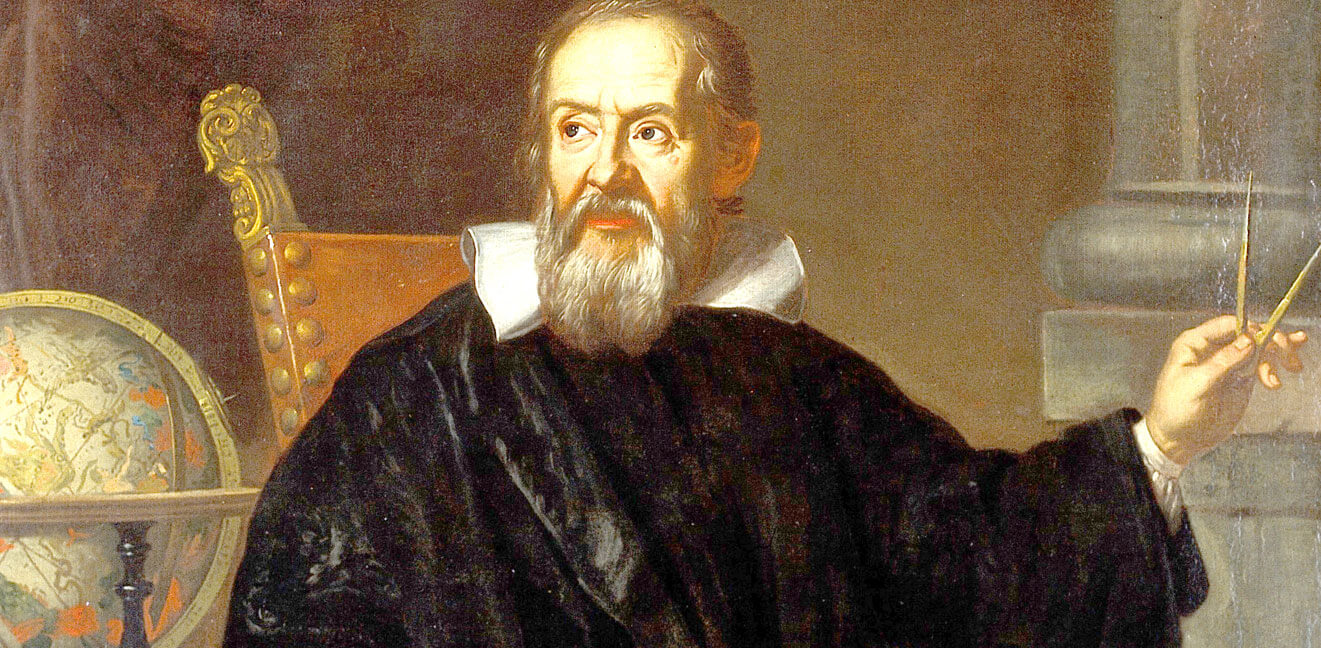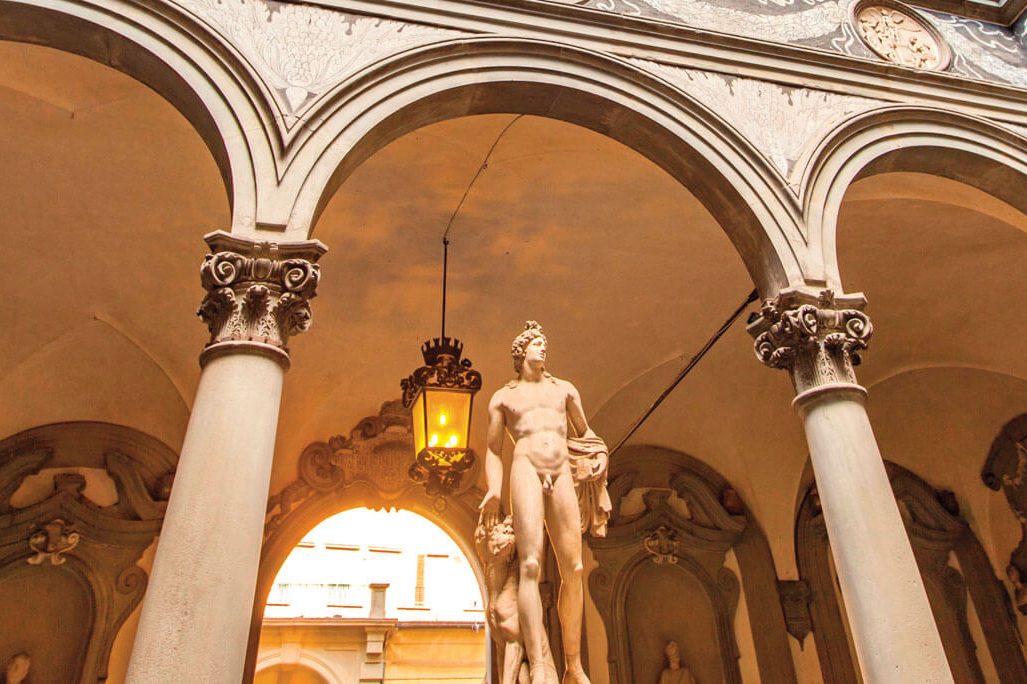As anyone who has ever been in Florence already knows, the Tuscan city abounds in all kinds of “traces” left by Italian geniuses of the past. One such genius was the great scientist Galileo Galilei (1564-1642), who lived here for most of his life and died in his villa of Arcetri, a location on the hills of southern Florence where he was confined by the Inquisition. Today, Galileo rests in the Basilica di Santa Croce, alongside many other “Italian glories”. But there are some less crowded places in which his works and memories are also kept alive. Let’s take a tour through Florence and follow in Galileo’s footsteps.
The first door you should knock on, if you are searching for some visible marks of Galileo’s enormous impact on the city, is undoubtedly that of the museum named after him. Situated just behind the Uffizi Gallery, in a charming square overlooking the Arno River and the Ponte Vecchio, the entrance to Palazzo Castellani (which houses the Museo Galileo) is signaled by the presence of a Monumental Sundial. But in fact no time-measuring instrument can ever urge to hurry those of you who enter here.
Formerly known as the “Institute and Museum for the History of Science”, the place is far from being focused exclusively on its namesake’s accomplishments: on the contrary, it provides an extensive look at virtually all of the fields in which Galileo expressed his scientific genius, be it astronomy, physics, engineering, or mathematics. Each room thus includes ancient instruments and artifacts belonging to either the Medici Collections (16th–17th century) or the Lorraine Collections (18th–19th century), so as to carefully display the historical turning points in world science and especially Galileo’s leading role in it.
Needless to say, the central room of the museum is wholly devoted to him, with modern reproductions of some of his experiments on the concept of motion and on magnetic attraction. And yet Galileo did not become famous just for his revolutionary theories, but also because of his excellence in inventing new instruments, such as the geometric and military compasses, the telescope, or the thermoscope (hence the modern thermometer). Some of these objects – the only surviving ones by the scientist himself – are exhibited in this very room, most notably two of his own telescopi and the original objective lens with which Galileo managed to discover the moons of Jupiter.
Actually, one finds that the genius quite literally left something of himself in this museum: sure enough, a display case in the same room presents all visitors with the macabre but still somehow ironic sight of Galileo’s bony middle finger. Next to it, two other fingers and a tooth of his complete this set of real “scientific relics”: a reminder of the saintly admiration with which Galileo has been adored by the scientific community since he first pointed those fingers to the sky above.
As soon as one leaves the museum by way of the rooms showcasing virtual reproductions of Galileo’s theories and experiments, one finds how the sundial on the outside signals that much time has passed. But no matter the hour of the day, there is surely time enough to keep on searching for the traces that this great genius left. As a matter of fact, it is sufficient to cross the Arno and go for a ten-minute walk on the uphill lane called Costa di San Giorgio to find a little house in which Galileo lived for a short time. Unfortunately, the interior is not available for visits, but you can nonetheless take a look at the pictured facade of the house, on which a portrait of the scientist appears.
For those of you who are willing to learn more about Galileo, the best choice at this point would be to take a bus and finally reach the hill of Arcetri. Here, you will find another, more refined dwelling known either as Villa Il Gioiello (literally, “The Jewel”) or as Villa Galileo: it is none other than the place where the great scientist served his lifelong house arrest during his last ten years. In this simple-facaded, U-shaped building – now belonging to the University of Florence – Galileo kept on writing about his scientific theories until his eventual death, even though he had by then become blind: it was from here that he probably last looked up to the sky!
It is not by chance that on the same hill, not far from this awe-inspiring sight, now stands the ultimate modern tribute to the Tuscan scientist: already by 1872, an important astrophysical observatory had been built here. Surrounded by a quiet park in which a scaled model of the solar system has also been reconstructed, the Arcetri Observatory thus offers the best occasion to pay homage to Galileo’s genius with a simple visit and a closer look at the stars.






























